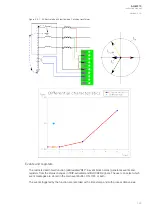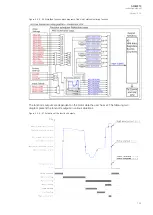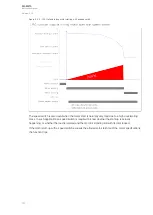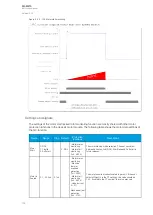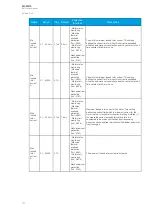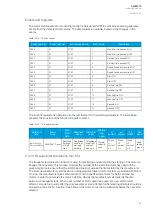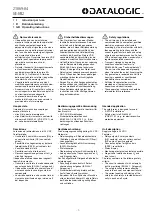
The function registers its operation into the last twelve (12) time-stamped registers. The table below
presents the structure of the function's register content.
Table. 5.3.8 - 70. Register content.
Date and time
Event
code
L1 current
L2 current
L3 current
Thermal delta
Motor load
dd.mm.yyyy
hh:mm:ss.mss
3969-3983
Descr.
Phase L1
current x I
n
Phase L2
current x I
n
Phase L3
current x I
n
Detected change in
thermal capacity.
Motor loading
when triggered.
5.3.9 Motor start/ locked rotor monitoring (Ist>; 48/14)
The motor start/locked rotor monitoring function is used for monitoring the start-up's duration as well as
the start-up's stress on the motor. The function can also be used after starting locked rotor protection.
The operating principle of the function is either definite maximum locked rotor time monitoring, or
inverse operating time based on the allowed
I
2
t calculation. When using the I
2
t-calculated starting time,
the maximum allowed starting time is automatically scaled according to the motor's current. For
example, when the network voltage is lower and thus the starting current is also lower, the calculation
gives the motor a longer starting time knowing these conditions prolong any start-up. The maximum
allowed starting time can be set manually, or the function can be commanded to automatically follow
the prescribed hot and cold safe stalling times of the motor manufacturer. Please note that this requires
the following: the machine thermal overload protection function must be activated, it must pick-up the
automatic safe stalling times, and the thermal status of the motor must be communicated to the
Ist> function. The user can set both the allowed starting time and the speed switch input. The speed
switch may be required by some high-mass applications when the start-up may last longer; the user
should check and ensure that the motor is actually accelerating instead of standing still with its rotor
locked.
A
AQ
Q-M210
-M210
Instruction manual
Version: 2.04
133




